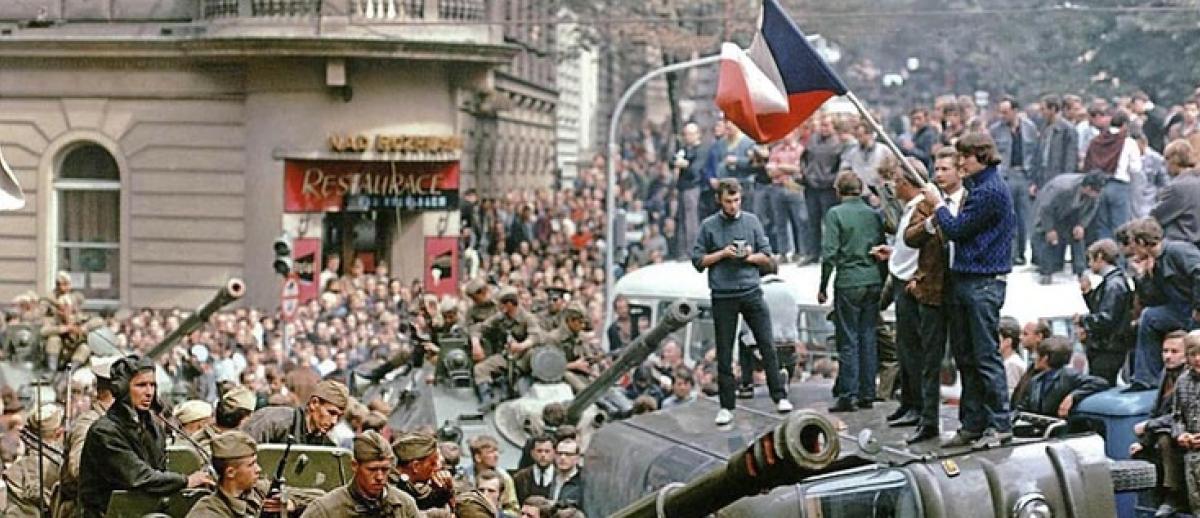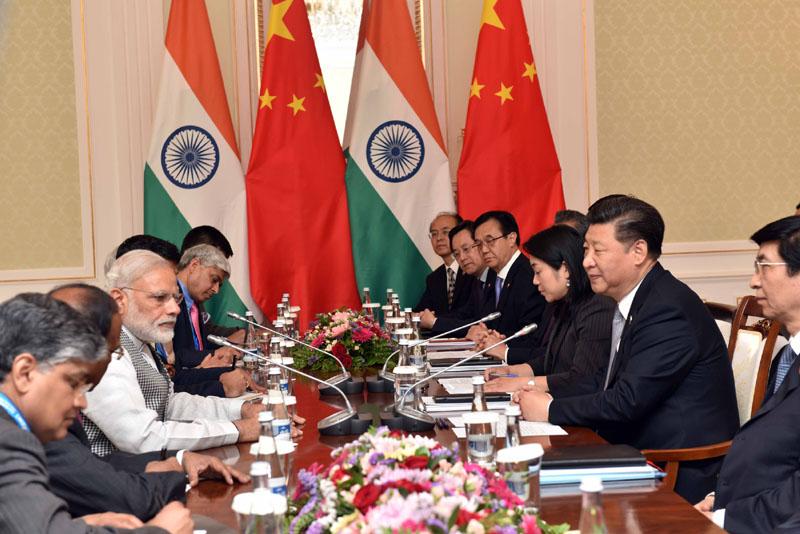Peace in World Affairs: Geopolitical and Public Imagination
archive


Peace in World Affairs: Geopolitical and Public Imagination
A key slogan during the student revolt in Paris May 1968 was: Imagination au pouvoir! Bring imagination to power!
France is now suffering from more imagination deficit than ever. But to call Le Pen-Front National “extreme right” when the issue is for or against the EU is not helpful; left-right was a 20th century dichotomy. And why not think bigger, beyond the EU: for or against EURASIA? Russia and China are ready and so is trade, as indicated by the growing number of trains plying the rails between London and Beijing. Today is about the West-East axis, not only the old colonial obsession with North-South (neo)colonialism. And how about both, EURASIAFRICA? After all, they do hang together geographically.
Another word is for imagination is creativity, like the spirit of the engineer with matter, the architect with space, the artist with form, the scientist with connections, humans with relations. We have tried to make creativity a trademark of the Transcend approach—transcend meaning “go beyond,” go beyond fixed positions of any kind. How it works is very simple, grounded in the assumption that underlying violence and the threat thereof are unsolved conflicts. Identify them, have dialogues with all parties to identify the goals in their visions for the future—of Afghanistan, of West Asia (not that London-made “Middle East”), of a good marriage, whatever. Where creativity enters is here: what might a new social reality look like that would make such goals compatible? Examples are to be found.
Out of the Cold War came a UN security commission for Europe, building on the economic commission to become, via energetic diplomacy in Helsinki, the Organization for Security and Cooperation in Europe. Next up: West, Central, Northeast Asia? South Asia already has SAARC, and Southeast Asia ASEAN. More recently, up came antagonistic states once fighting over a contested area, now considering joint ownership instead, like a zona bi-estadal in the Andes between Ecuador and Peru or the relaxation of Philippine fishing access in disputed areas of in South China Sea. There are many more examples,1 some realized, some not (yet).

Dry forest area in Ecuador-Peru borderlands, part of the region's first bi-national biosphere reserve. Source.
There is something static, almost dead really, about the state systems, particularly in how states relate to each other. As if states have found a final form, and as if their relations will always remain anarchic. The concern for security—no violence within and without—is indeed legitimate, but dominant answers in terms of police and military, using violence and the threat thereof, dominate what might otherwise be possible. They often involve knee-jerk reflexes, devoid of imagination, not even of reflection. Even more seriously, as if the agenda for inter-state relations had only one point: “security” of a kind that often seems to entail scanning the world guided by what is also known as paranoia.
Another word is for imagination is creativity, like the spirit of the engineer with matter, the architect with space, the artist with form, the scientist with connections, humans with relations.
But states cooperate when trading, across gaps of distrust, even paranoia. They do, and often very creatively, for mutual and equal benefit, greatly helped by price mechanisms defining what is “equal.” Both are better off with a good business deal, but they do not want the other side to be much better off. They watch each other, knowing that the survival of the other party may be a condition for their own survival; but if not, then as winners gripped by the fear of being losers.
However, cooperation through exchange for mutual and equal benefit can be expanded beyond economic goods supplied and demanded. The theory and practice of negative and positive peace may be helpful concepts for explaining this. Negative peace points to non-provocative security, defensive defense, including guarding well what should be defended (rather than hunting for terrorists everywhere). No violence, no exchange of bad for bad, including psychologically bad in the form of threats.
Positive peace goes significantly beyond that into exchanging good for good, as in trade, and we would put our finger on skills as a key element. “You seem to do well something I am not good at, but on the other hand, I am quite good at X.” At the personal level we may think of cooperation between the bright student with no skills in sport and the sporty but somewhat dumb one, lifting each other up. What about following a similar logic at the inter-state level?
The concern for security… is indeed legitimate, but dominant answers in terms of police and military, using violence and the threat thereof, dominate what might otherwise be possible. They often involve knee-jerk reflexes, devoid of imagination, not even of reflection.
Using an Octagon map of our present multi-polar world, with Russia-India-China-Islam emerging, USA-EU declining, and Latin America Caribbean-Africa as the old “third world,” we get 8x7/1x2 = 28 bilateral relations. All these poles have bad but also good aspects, and it is entirely legitimate to be on guard against the bad and entirely illegitimate not to be open to the good aspects, like skills.

Examples abound.2 Take two giants, nos. 1 and 2 in population (not smaller Western states), China and India. China is good at lifting the bottom up (even if they still have a long way to go) while India is not, ridden by caste; India is good at accommodating cultural diversity with its linguistic federalism (even if not in Assam), China less so. How about meeting, comparing notes in an open-ended dialogue, itself an instrument of mutual and equal benefit? And preferably, not doing so behind closed doors because others may also have much to learn, not least from the willingness simply to have problems openly discussed.
The entire world would benefit from a skills market where good could meet with good, not only bad meeting with bad via traditional modes of competition, conflict, and deterrence.
Take the old super-powers, USA and Russia, one good on individual freedom to innovate and practice, the other on divesting itself of an empire almost without violence—both very weak where the other is strong. Of course, it takes some courage for them, as also for China and India, to admit shortcomings, but it is not beyond the realm of possibility. The entire world would benefit from a skills market where good could meet with good, not only bad meeting with bad via traditional modes of competition, conflict, and deterrence.
There is a major problem, however. We have been drilled with endless repetition of the “developed vs. developing” dichotomy so that many of us believe the former have no problems whereas the latter do. Much better would be a yin-yang perspective on both: that something is missing in all, something is accomplished by all. The limitation lies in our limited public imagination. Expand it, and new world visions open up in our minds, shared with others in new speech, enacted by new acts. We can if we will. We will if we imagine.
1 See “The Transcend Track Record.” Chapter 10 of the forthcoming The Art of Peace.
2 They are spelled out in Johan Galtung, A Theory of Peace: Building Direct



